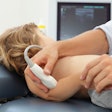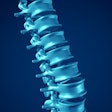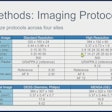Dear Musculoskeletal Imaging Insider,
This issue of the Musculoskeletal Insider has an international flair with research reports from around the world.
The first stop is Italy, where researchers found that MRI shows high sensitivity for detecting osteomyelitis in a diabetic foot, but lower specificity related to Charcot neuropathic osteoarthropathy.
In addition, inflammatory hyperaemia caused by the ulcer can deteriorate the diagnostic quality of 40% to 50% of MR angiography studies in the infrapopliteal region. If and when that occurs, the study recommends selective arteriography. Read more about the study from Carlo Poma Hospital in Mantua by clicking here.
In other Musculoskeletal Imaging Digital Community news, editor Brian Casey reports on a Canadian study that details a new type of slot-scanning digital radiography (DR) system. The research suggests that the DR system can produce sharply lower dose in pediatric scoliosis studies compared to computed radiography.
The EOS system from Biospace Med in Paris uses a unique design of two x-ray tube and detector assemblies. The system, which received 510(k) approval in the U.S. in September 2007, scans standing or sitting patients by sliding up and down during an exam.
From Spain comes research that helps settle the debate of the best location for shoulder arthrography injection. The study, from Virgen de la Arrixaca University Hospital in Murcia, recommends that physicians use the upper third of the humeral head as the optimal injection site for anterior MR arthrography of the shoulder. Learn more about their research and why they chose that location by clicking here.
With the annual meeting of the Radiological Society of North America (RSNA) quickly approaching, make some time to read AuntMinnie.com's Road to RSNA before November 29 and see what the vendors and their modalities will have to offer in Chicago. RSNA 2008 will prove to be a learning experience, as always.



















